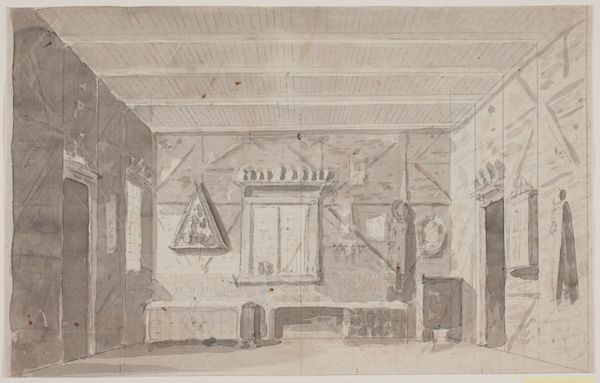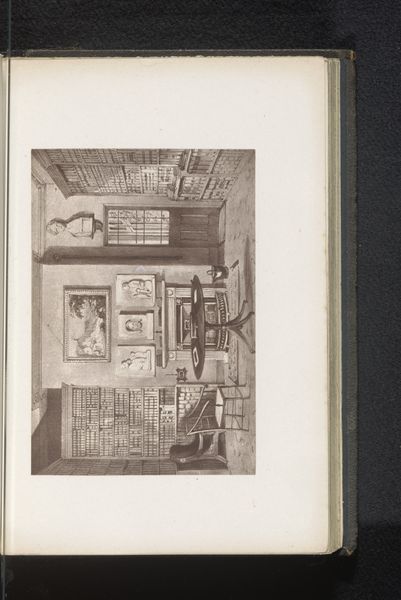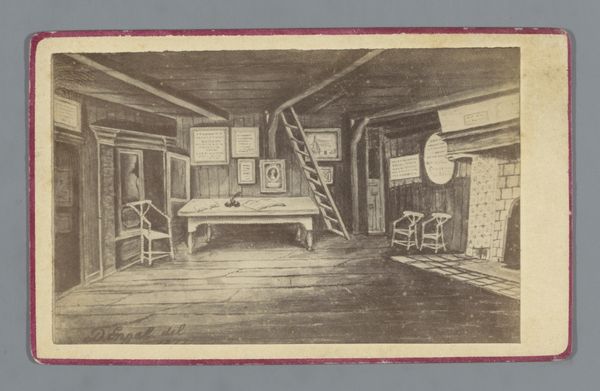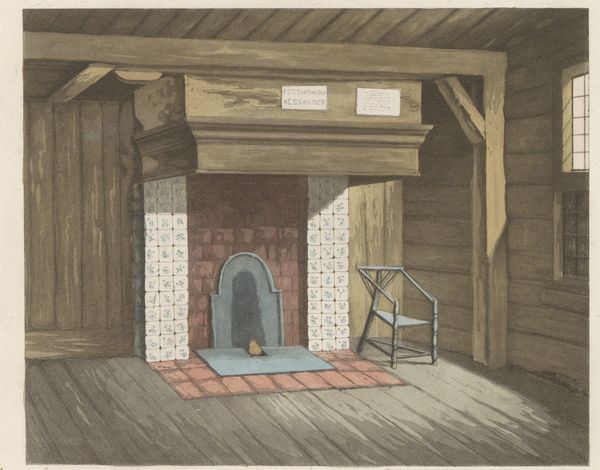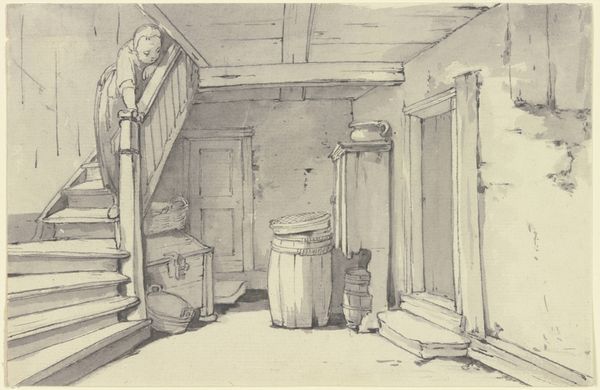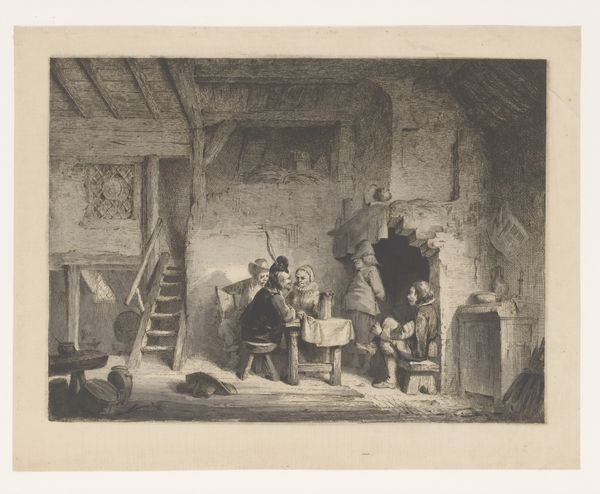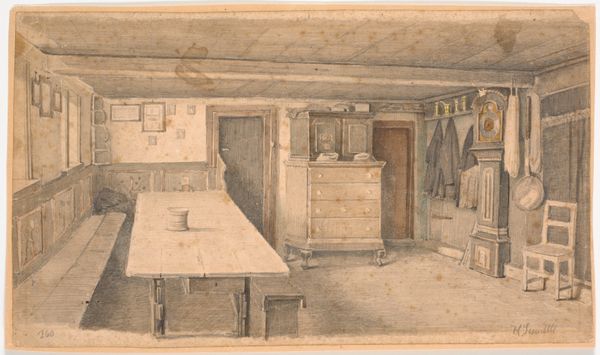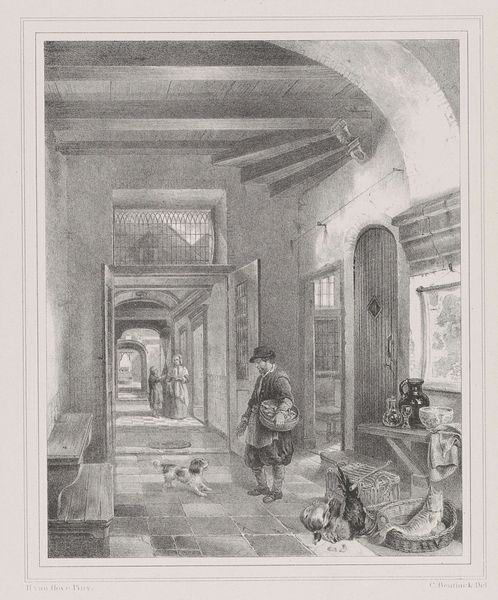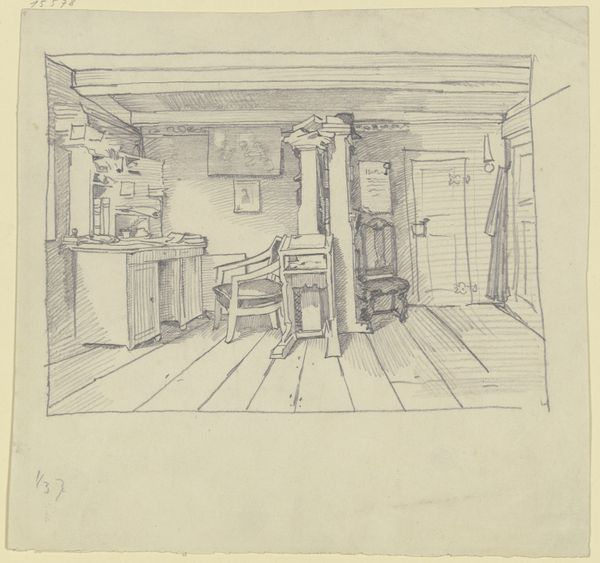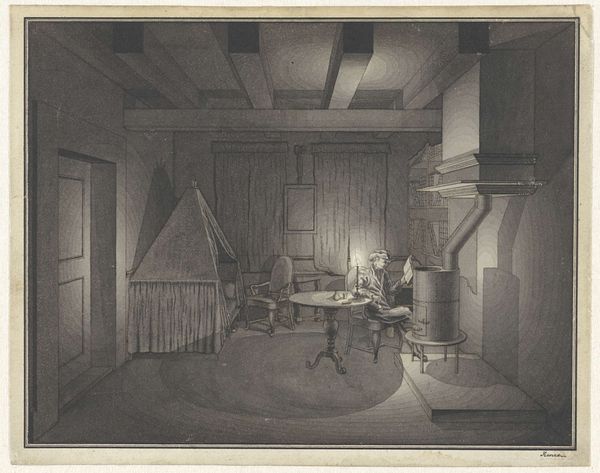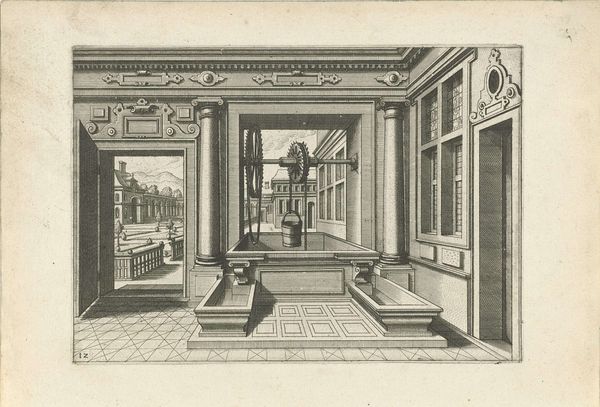
drawing, print, paper, engraving
#
drawing
# print
#
old engraving style
#
paper
#
genre-painting
#
history-painting
#
engraving
#
realism
Dimensions: height 118 mm, width 162 mm
Copyright: Rijks Museum: Open Domain
Editor: Here we have an engraving from between 1840 and 1890, depicting "The Room in Saint-Malo Where François-René de Chateaubriand was Born". It feels incredibly domestic but also staged, like a historical reenactment. What strikes you about it? Curator: I’m immediately drawn to the idea of the birthplace as a site of cultural memory. This isn’t just a room; it's the enshrined origin of a significant literary figure. Consider how this image functions within the emerging tourism and literary pilgrimage of the 19th century. Editor: So, you're saying this print is about constructing and selling a certain narrative? Curator: Exactly! How do we visualize genius? This print suggests through a specific domestic interior. Note the ordinary yet well-maintained setting: the fireplace, the humble bed. This constructs Chateaubriand as someone rising from relatable origins. It’s less about pure historical accuracy and more about creating a publicly consumable story. Editor: I see it now. The ordinariness makes him feel accessible. Does the act of reproducing this scene as a print change how people perceived Chateaubriand at the time? Curator: Absolutely. Mass production makes the image accessible to a broader audience, shaping public perception on a grand scale. This also hints at the institutional forces at play; the demand for such images reflects the societal value placed on remembering and celebrating national literary figures. Do you think it romanticizes the space? Editor: I do, and I now realize I’d initially overlooked how politically charged such a seemingly simple image could be! Curator: Precisely! It reveals how images shape historical narratives, intertwining with cultural and institutional forces. Editor: That’s really fascinating. I'll definitely consider the narrative an artwork creates from now on. Thanks!
Comments
No comments
Be the first to comment and join the conversation on the ultimate creative platform.
